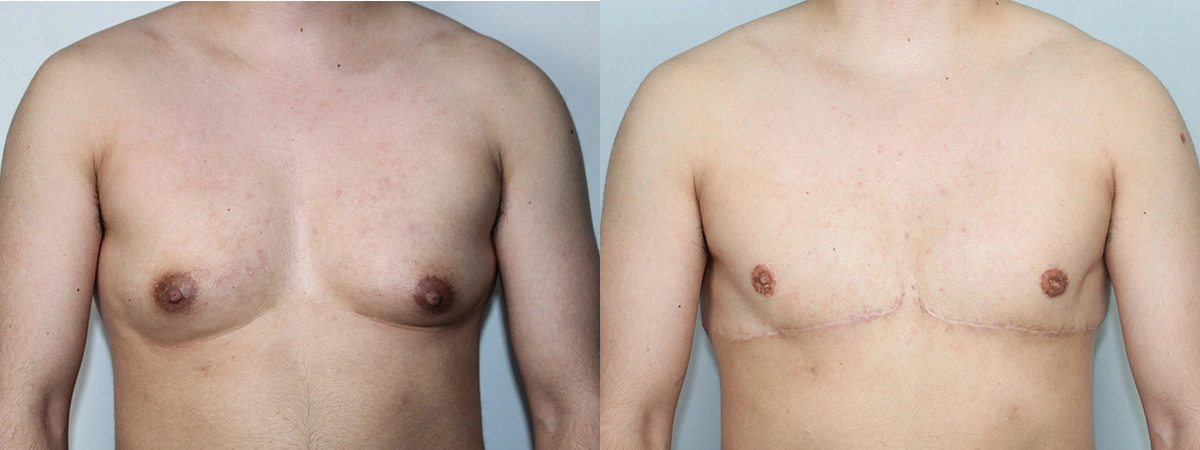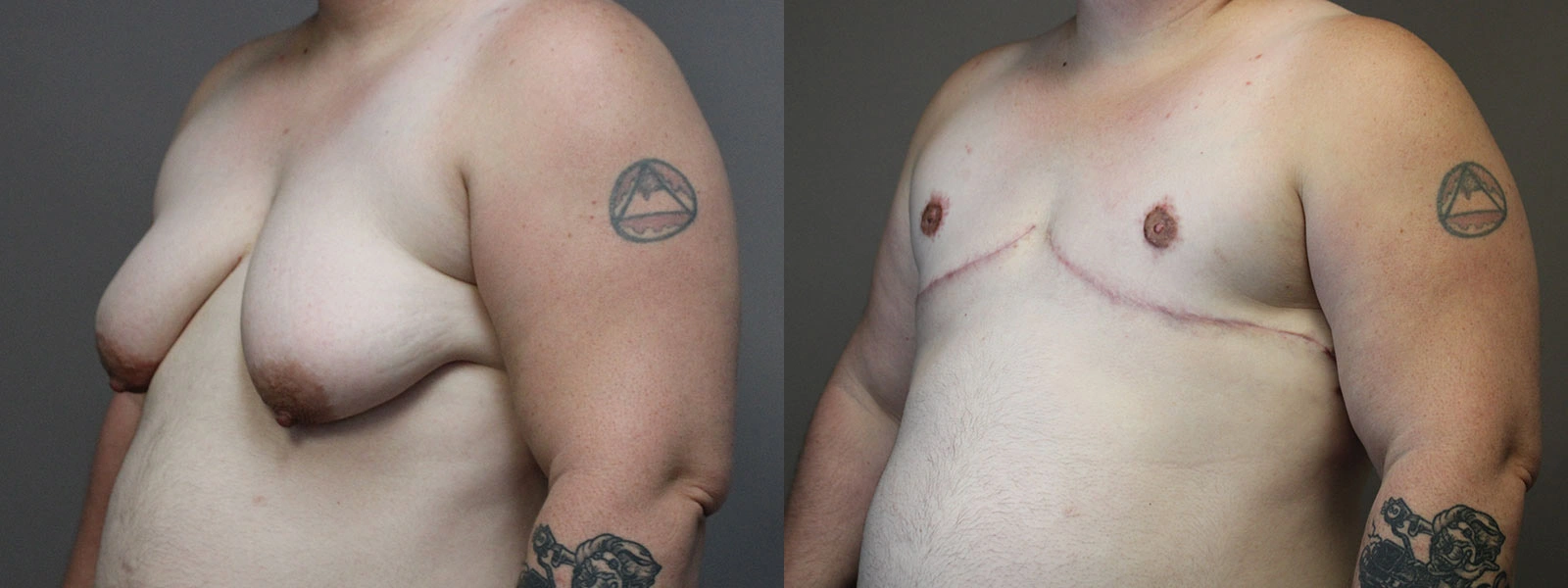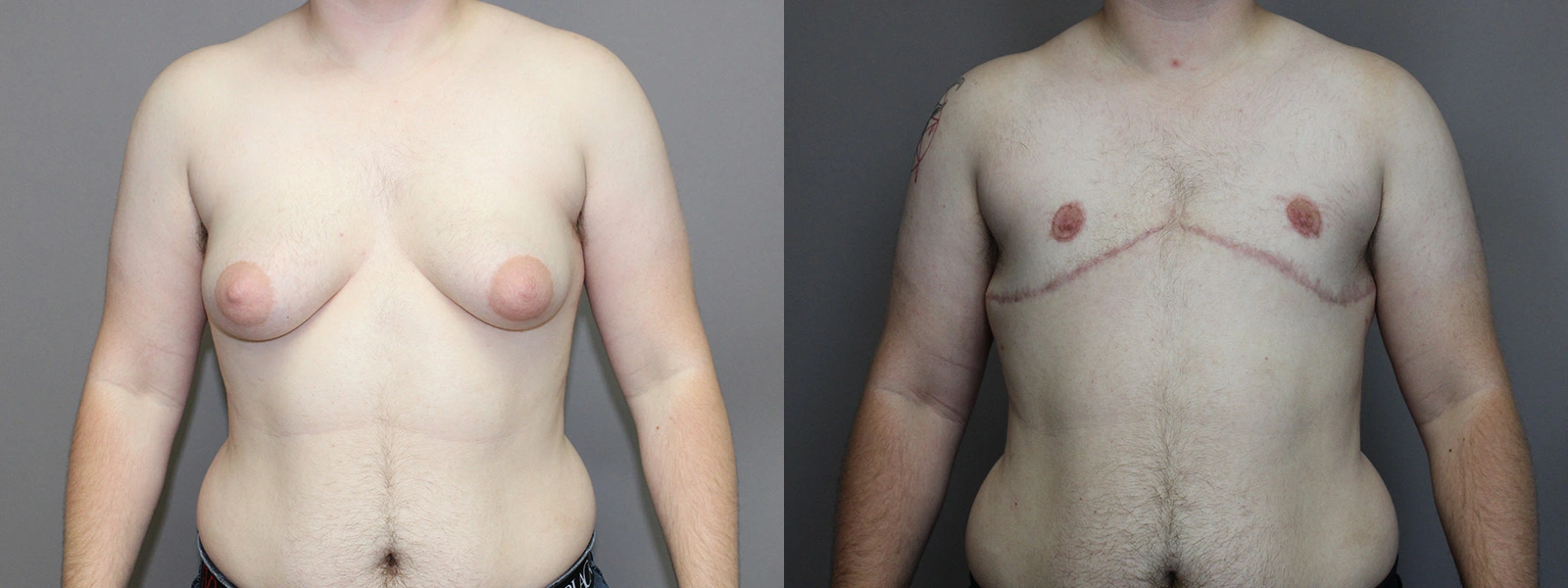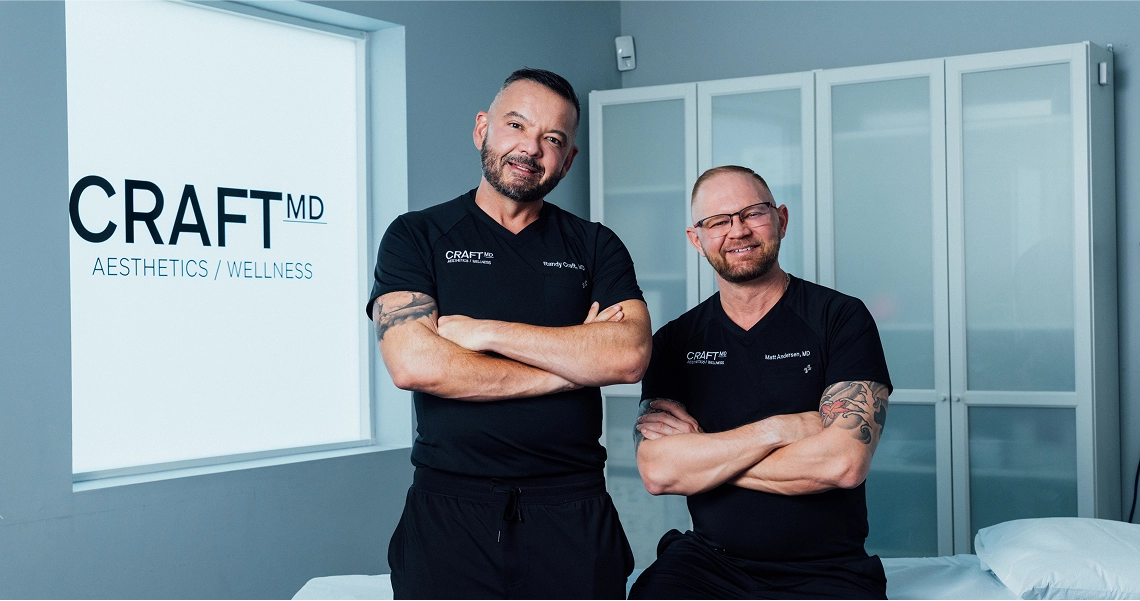
What to Expect on the Day of Female-to-Male Top Surgery
FTM gender confirmation top surgery is performed under regional nerve blocks and IV anesthesia. The procedure removes breast tissue in order to flatten and masculinize the chest, and does so with a few different techniques. Dr. Craft will review these techniques with you during your initial consultation to determine which one is best suited for your specific needs. The existing breasts and nipple position will be a factor in determining which method is right for you. Each of these techniques can also incorporate liposuction to remove excess fat and enhance the outcome.
Double Incision Technique
Marks are made on the breasts to guide Dr. Craft as he performs the surgery. The areolas are removed from the chest, prepared for re-attachment, and stored. Liposuction may be done, but this will depend on the patient. The incisions are made along the fold of the breast, and a second incision is made higher up on the breast.
Breast tissue and excess skin are removed, and the skin edges are then lined up perfectly and sutured closed. The new location for the areolas and nipples is chosen, and they are then placed. A double incision technique achieves the tightest and flattest results, and also allows for full customization of the areolas. The downside is that sensation will be lost or enhanced in the nipples, and there are considerable scars. A double incision technique is best suited for individuals with excess skin on the chest.
Keyhole Incision Technique
The incision is made along the bottom border of the areola, and the breast tissue is removed directly through this small hole. Dr. Craft will use a metal retractor and headlight to develop a layer superficial to the breast tissue, out to the edges of the breast tissue in every direction. With the skin elevated, Dr. Craft will remove the breast tissue from the underlying muscle and excise it through the hole. The incisions are then closed with sutures. This method is best for those with minimal excess skin and breast tissue. The areola is not resized with the keyhole technique.
Periareolar Incision Technique
The incisions are made around the areolas, which are resized to the standard size for male areolas. A curved incision is then made to remove the breast tissue. The skin is tightened, and the incisions are closed with sutures, leaving behind a smooth, flat, and symmetrical chest. This technique is best suited for patients with mild to moderate skin excess, yielding scarring that is minimally visible.











